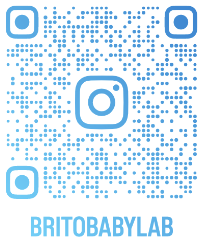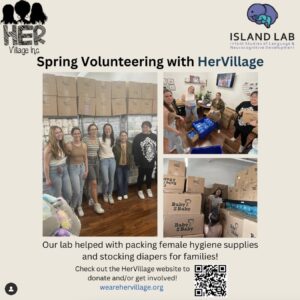One of the assignments towards the end of your placement is a “Conference Poster”. This is a document that is shared with Year 1 and Year 2 students and displayed at a Poster presentation to give incoming students an insight into different placements and help them make decisions for their own placement.
displayed at a Poster presentation to give incoming students an insight into different placements and help them make decisions for their own placement.
The poster is an ungraded piece of work (pass/fail) for which you are given guidelines, including key information on the Theme and Audience, Structure, and past student examples. As the poster will be printed in A1 and portrait, it is important to keep in mind the layout and have the Bath banner at the bottom. This will be explained to you and you will be given a template!
Please find below my poster for the placement year 2022/23. In this blog, I will elaborate on each section as there is limited space on the poster itself!
About ISLAND Lab

To begin, I highly recommend checking out the ISLAND website (http://britobabylab.com/) and Instagram (@britobabylab or scan the QR code) as these are regularly updated (by me!) and give agreat look into the weekly activities of the lab.
Next, as stated in my poster, ISLAND Lab is a developmental psychology lab which carries out multiple longitudinal projects focusing on early social interactions and the home environment, and how this influences child brain and behavioural development. From studies such as the COVID-19 & Perinatal Experiences (COPE) Study, Stress, Home Environment, Language & Learning (SHELL) Study and Online Remote Child Assessment (ORCA) Study, there are plenty of projects to get involved in. Each one is in a very different stage of the research process - while some have just begun and are still in the designing phase, others are well established and far into data collection. For example, the COPE study began in March 2020 and as there are large amounts of participant data, I am using COPE data for my final year dissertation. This was an unexpected advantage of doing my research placement at a lab with multiple projects and I highly recommend it as you can concentrate on what aspect of the research process you enjoy the most based on project available and gain an in-depth understanding of all stages of research.
My role
I will go expand on the points in my poster in detail!
-
Monitor, retain and engage with participants → we recruit families through flyers, emails, Facebook ads and in-person locations such as daycares. All the consents are monitored online through a platform called RedCAP, which I check daily to see if there are any new consents at our 6, 9, 12, and 18 month time points. For longitudinal participants (those who have completed at least one previous time point), I retain and engage them by sending hand-written birthday cards and gifts for their babies.
-
Attend and code in-person and remote visits, conducting tasks → at 6 and 12 months we conduct remote visits which I attend as an E2 (Experimenter 2) where my task is to record the mother-baby tasks and take notes on timings and protocol errors or changes. As pictured in my poster, one of the tasks is Still Face. At 6 months, mothers are asked to play peek-a-boo with their child for 2 min, stare at them blankly for 30 seconds and repeat this. Consequently, I code Negative Affect, Positive Affect, Self-Comforting, and Avoidance. At 12 months, this is adapted to include technology use which is very interesting! It is called Mobile Still Face, where moms are asked to play with the child for 2 min and then stare at their phone for 2 min, and finally interact again with their child. Here we look at the proximity and interactions of the child with mother when mother is “distracted”.
-
Conduct, transcribe and code interviews with mothers → I conduct 30-50 minute interviews with mothers across the United States asking them about their home environment, what they think is most important for child brain development and what makes it easier/harder for them to be the parent they want to be. This is the second part of a study which initially tracks babies’ eye movements and attention when watching a video. Following the interview, I transcribe it (write it out) and look for themes based on codes and subcodes that we created.
-
Update social media channels → Adding on to the website and Instagram I linked at the beginning of my post, I take pictures for our lab in screenings, lab socials or volunteering events to connect with our community and families.
-
Lead the Community Outreach team → I lead a team of 5 other research assistants where we reach out to the community. As our work requires participants with families and young children, it is important for us to communicate the importance of our research with them to show that their time and effort in participating with us matters. As lead I establish projects, assign tasks and follow up on deadlines to make sure that we fit our Community Outreach (CO) projects within the time frames of the lab. I was part of the team in Semester 1 and led it in Semester 2, and thoroughly enjoyed both experiences! Below you can see one of the CO events we organized, a Diaper Drive.
Pros
As you can see by the extremely positive points on my poster, there is little that was not a “pro” during my placement! I had incredible support from my coworkers who quickly became my friends due to how much time we spent together in person in the lab, but also how we made sure to also make time outside of office hours to discover the city and do cultural activities. As you can see in the pictures attached, we went to basketball and baseball games, food tours around Chinatown and festivals, and day trips upstate or to pumpkin farms. I had full trust in my supervisor for both professional and personal questions including phone companies, where to do laundry or must-try restaurants in the city!
Cons
A large part of our work dealt with participants which can be hard to organize and coordinate, therefore we had to make time on weekends or after work hours to accommodate their busy schedules or different time zones. I worked on average one weekend a month and sometimes early mornings/late evenings, however, I could compensate with taking an afternoon off during the week. These visits tended to run smoothly and the in-person visits were some of my favorite parts of placement!
New York City was named the most expensive city in the world alongside Singapore in a 2022 report by the Economist Intelligence Unit, so this is something to keep in mind - especially as some are unpaid. Costs of living add up quickly as there are non-negotiable costs (visa, rent, food, telephone bills) and the budget for leisure activities or hobbies tends can be high if you want to go out on weekends, to the gym, do any day trips etc. My advice with this is to have a very clear budget for things you need to pay, and consider doing activities with friends that are not too expensive. My favorites included going on walks or cooking in each others’ apartments - you can still discover the city and eat without spending a lot.
Finally, the onboarding process to get your IDs for different departments can be a long and tedious process, but I was lucky in that my supervisor helped me with this and reminded me to follow up with HR. Getting started with this early on is important, and being patient with the process is also part of the experience.
Top Tips
-
Ask questions if you are unsure/want to learn more! → everyone around you is happy to have the support of a placement student and wants to see you learn and grow professionally.
-
Take advantage of the city → start off being familiar with the area that you live in, as this will make you feel safe and comfortable in your home. I would recommend exploring the area around your workplace, and then everything in between! This is a great way to discover the city on a daily basis as it has so much to offer. Ask people who have lived in the city for a while their favorite food recommendations too!
-
Share what you are interested in/want to learn so that you get the most out of placement! → I was not sure if research is what I wanted to focus on after finishing my degree, and I realized throughout my placement that I saw myself in the Human Resources/People Management aspect of psychology. I communicated this in check-ins with my supervisor and she was extremely flexible in giving me tasks that related to this such as engaging, monitoring and retaining participants, social media communication, organizing volunteering and awareness events. In Semester 2 I was invited to be lead of the Community Outreach team. This was a great opportunity to develop my leadership team as I lead a team of 5 other Research Assistants, assigned deadlines and checked in with them on our main project of the semester - a Diaper Drive.
I hope this was a useful read both about what the Placement Poster entails, and more specifically what a research placement at New York University is like. Please let me know your questions relating to any and all sections of my poster!
Respond


